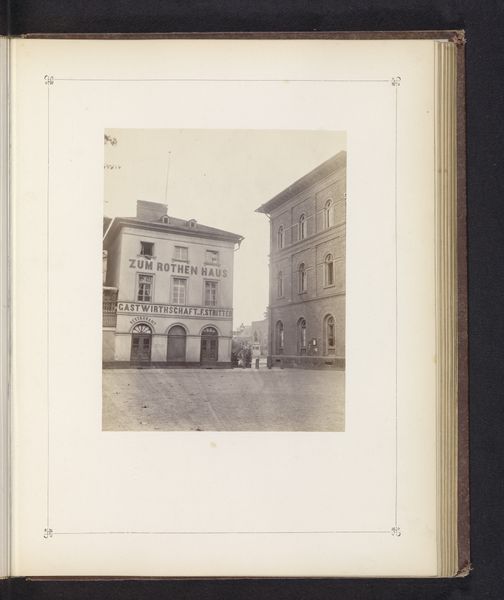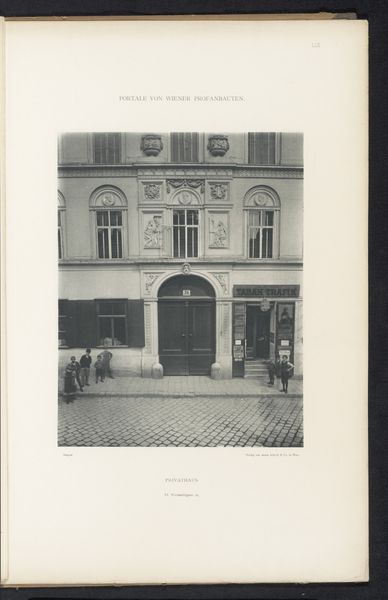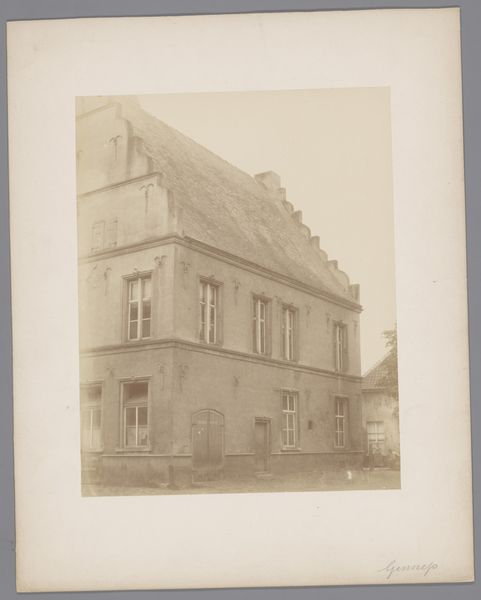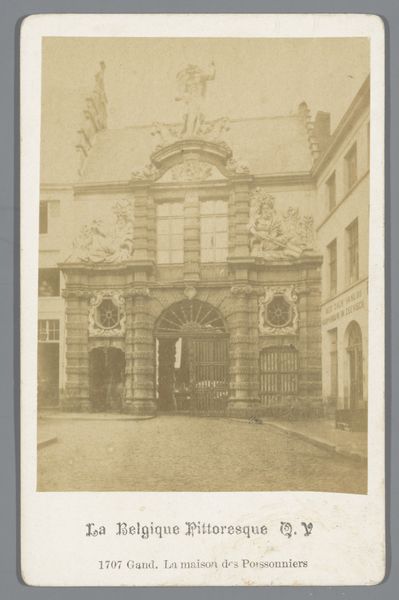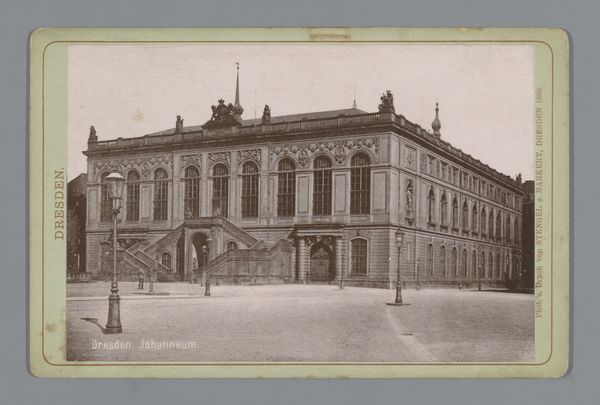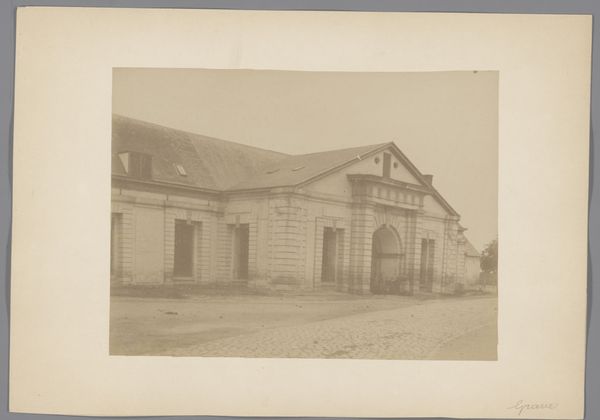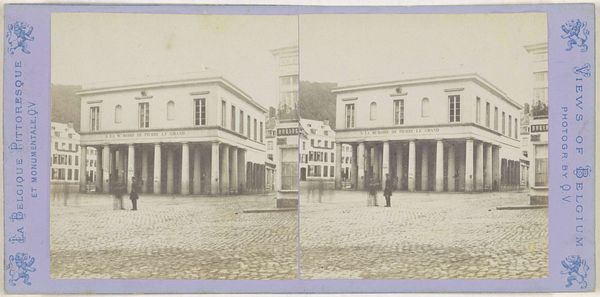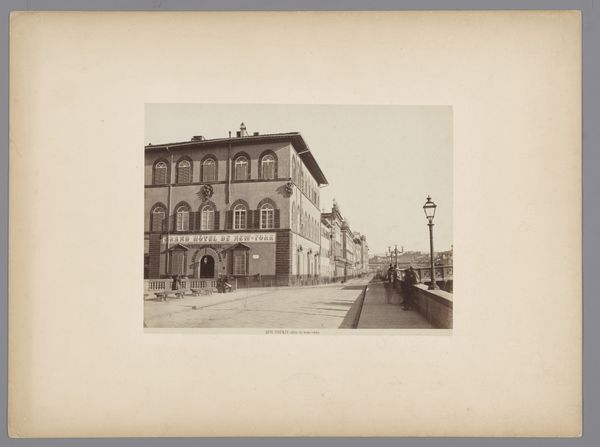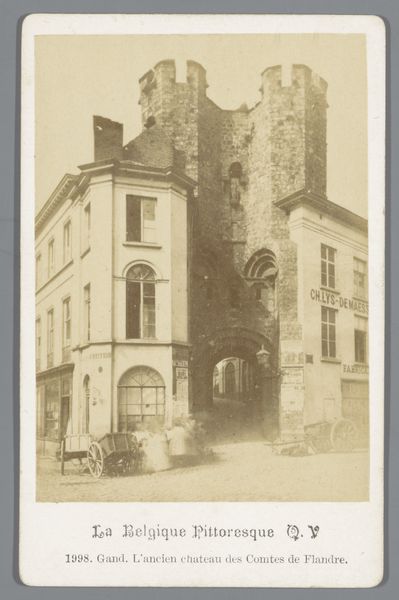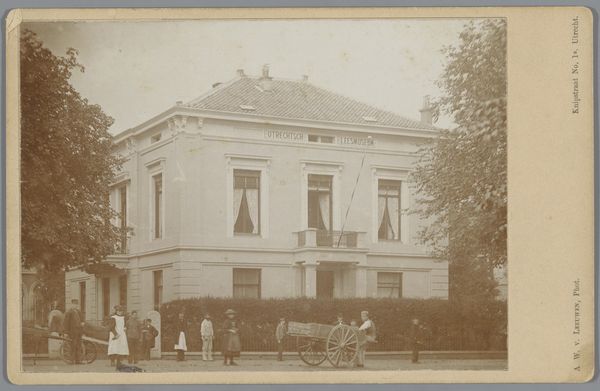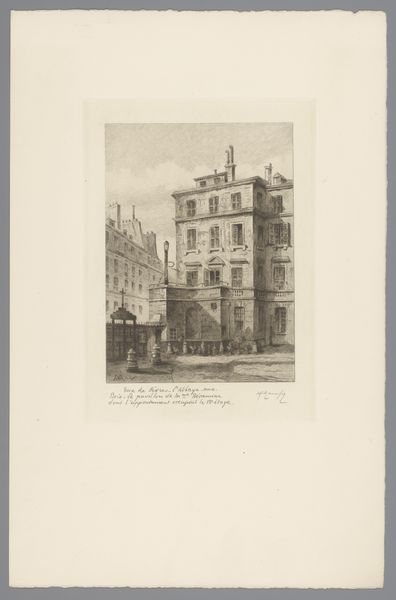
Dimensions: height 107 mm, width 68 mm
Copyright: Rijks Museum: Open Domain
Jules Hippolyte Quéval created this photograph of the Peter-de-Grotebron in Spa, Belgium, sometime in the mid-19th century, using a process that was itself then cutting-edge. Photography in this period relied on a complex alchemy of materials—glass plates, light-sensitive chemicals, and precisely calibrated lenses. The photographer wasn't simply capturing an image, but actively crafting it through careful manipulation of these elements. Think of the light itself as a material, carefully coaxed to reveal the monument’s neoclassical architecture. Quéval's choice of photography, rather than painting or printmaking, speaks volumes. It reflects a desire to capture the world with a newfound objectivity. The resulting print collapses any lingering distinction between artistic skill and industrial process. The resulting image is more than just a record; it's a material artifact, imbued with the social and technological energies of its time. It reminds us that even the most seemingly straightforward images are products of complex production processes, and are inseparable from the world of labor, politics, and consumption.
Comments
No comments
Be the first to comment and join the conversation on the ultimate creative platform.
